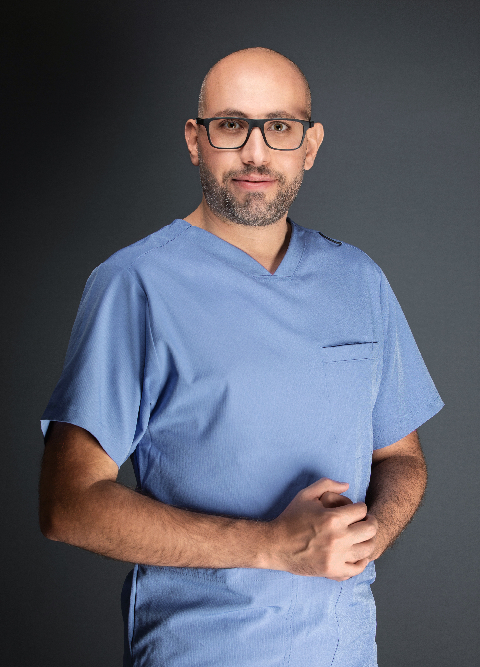Osteopathy in the Cranial Field (OCF), developed by William Garner Sutherland, is a subtle and powerful therapeutic approach based on the body’s primary respiratory mechanism. This hands-on course introduces healthcare professionals to the art of palpating craniosacral rhythms, interpreting dysfunctions, and applying both direct and indirect techniques to facilitate structural and emotional healing.
Through focused two-day training, participants will explore the dynamic movement of cranial bones, cerebrospinal fluid, and sacral mobility to address conditions such as headaches, vertigo, TMJ dysfunction, tinnitus, and more.
Diagnose & Treat Functional Disorders
Understand the clinical indications for OCF and develop hands-on skill in treating headaches, TMJ issues, tinnitus, and vestibular symptoms.
Palpate and Interpret Cranial Rhythms
Master techniques for detecting craniosacral rhythm and applying it to therapeutic decision-making.
Apply Key OCF Techniques
Learn core interventions including the Cranial Vault Hold, Frontal Lift, V-Spread, Occipitoatlantal Decompression, and CV4 Still Point Induction.
Enhance Emotional & Structural Healing
Work holistically with patients by releasing restrictions related to mental and emotional tension stored within the craniosacral system.
Step-by-Step Protocols
Practice John Upledger’s Ten-Step Protocol and other structured approaches to ensure safe and effective implementation of techniques.
Foundational Concepts
History of Craniosacral Therapy
Primary Respiratory Mechanism
Craniosacral Skeleton & Key Sutures
Sphenobasilar Synchondrosis (SBS): Flexion & Extension
Cranial Rhythmic Impulse (CRI)
Core Techniques
Vault Hold, Fronto-occipital Hold
Sacral Hold, Frontal Lift
Occipitoatlantal & Zygomatic Decompression
Parietal Lift, CV4 Still Point Induction
V-Spread: Interparietal Sutural Release
Advanced Manual Skills
Temporal Alternate Release & Mastoid Wobble
Vomer Pump & Ethmoid Pump
Sphenopalatine Ganglion Stimulation
Mobilization of Palatine & Zygomatic Bones
Alar Cartilage Release & Alveolar Process Techniques
Medial Pterygoid & Suprahyoid Muscle Release
Suboccipital Fascia Work
TMJ Compression/Decompression
Clinical Integration
Indications & Contraindications
Mental-Emotional Link to Physical Restriction
Upledger’s Ten-Step Protocol
Final Testing & Certificate Distribution

Senior Physiotherapist | Expert in Osteopathy & Manual Therapy
8:30 AM – 9:00 AM
• Registration and Welcome
9:00 AM – 10:00 AM
• Introduction
• History of the Craniosacral Concept
• Osteopathy in the Cranial Field (OCF)
• The Craniosacral Skeleton
• Cranial Palpation
• Understanding Cranial Rhythmic Impulse (CRI)
• Craniosacral Mechanism
• Primary Respiratory Mechanism
• Flexion and Extension of the Sphenobasilar Synchondrosis
• Technique Styles
• Direct and Indirect Techniques in OCF
• Exaggeration and Disengagement
10:00 AM – 10:30 AM
• Break
10:30 AM – 12:30 PM
• Placing Your Hands
• Palpation of Rhythms
• Interpreting the Craniosacral Rhythm
• Cranial Motion Testing
• Practice Exercise: Membrane Tension
• Activity: Proprioceptive Perception
• Palpating Poise and Rhythms on Yourself
12:30 PM – 1:30 PM
• Lunch
1:30 PM – 3:30 PM
• Practice: Palpating Cranial Rhythm on a Subject
• Indications & Contraindications for OCF
• Occipital Decompression
• Cranial Vault Hold
• Fronto-Occipital Hold
3:30 PM – 4:00 PM
• Break
4:00 PM – 6:00 PM
• Posterior Temporal Hold
• Mobilizing Sutural Restrictions
• V-SPREAD (Suture Disengagement)
• Interparietal Sutural Opening (V-Spread)
• Practice: CV4 Still Point Induction
9:00 AM – 10:00 AM
• Sacral Hold
• Frontal Lift Technique
• Decompression of the Occipital Condyles
• Occipitoatlantal Decompression
• Parietal Lift
• Zygomatic Bone Decompression
• Treatment of the Sphenobasilar Synchondrosis (SBS)
• Temporal Alternate Release Technique
10:00 AM – 10:30 AM
• Break
10:30 AM – 12:30 PM
• Mastoid Wobble
• Vomer Pump Technique
• Mobilizing the Palatine Bones
• Sphenopalatine Ganglion Stimulation
• Alar Cartilage Release Technique
• Ethmoid Pump Technique
• Palpation of the Zygomatic Bones
• Application to the Alveolar Processes
• Ethmoid Bone Dysfunctions: Flexion & Extension
• Frontonasal Suture Techniques
12:30 PM – 1:30 PM
• Lunch
1:30 PM – 3:30 PM
• Metopic Suture Rhythm Technique
• Treatment of the Eyeball
• Medial Pterygoid Muscle Release
• Suprahyoid Muscle Release
• Suboccipital Fascia
• Venous Sinus Drainage
• Temporal Decompression
3:30 PM – 4:00 PM
• Break
4:00 PM – 6:00 PM
• Temporomandibular Palpation & Motion Testing
• TMJ Compression/Decompression
• Balanced Membranous Tension
• John Upledger’s Ten-Step Protocol
• Mental & Emotional Connections to Physical Tension
6:00 PM
• Final Test, Certificate Distribution, and Farewell